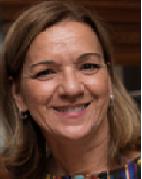
One Spring five years ago, my life was busy with work, family, and regular physical activity. I had been fatigued for a long time, which I thought was par for the course, having just completed a university degree while working full time. During that summer, I often found myself out of breath going upstairs. I needed to sit half-way through my short walk from the train station into my workplace. Then, one day at work, I briefly lost sight in my left eye while experiencing an intense feeling of heat creeping up the base of my neck to the roots of my hair. My eyesight gradually returned over a few hours. I had an emergency consult in ophthalmology. Diagnostic: Event of Amaurosis fugax. Recommendation: You need to consult with Cardiology for vascular problems.
The following week, I couldn’t even walk 100 meters. Making my bed was all I could accomplish in one day. The chest pain, shortness of breath from the least effort, the cardiac spasms, and the brain fog—accompanied by ever-present extreme fatigue—were my daily struggles.
During my visits to different emergency rooms, I met with ER doctors, cardiologists, neurologists, gastroenterologists, radiologists, psychosomatic doctors, and psychotherapists. I underwent numerous tests throughout 18 months, trying to get answers for my debilitating symptoms. My family doctor eventually prescribed a nitroglycerin patch to see if this would be helpful. And it was. When I met with cardiologist number six, things changed. This professional requested to see all my results from previous tests. After reviewing these tests, he ordered some more to confirm what he thought was my health issue. Eventually, he gave me a diagnosis: cardiac microvascular angina. My treatment finally began after two years of debilitating symptoms.
I joined an online support group early in my journey. The group was beneficial because it helped me to validate my symptoms and gave me the drive to continue seeking answers. Getting support allowed me to take charge so that I could self-manage my condition for a better quality of life.
After three years away on sick leave from my job, I embarked on a progressive return to work (two years to diagnostic and one year in medications adjustments). My position is now one where I am sedentary due to my condition. There have been many adjustments and accommodations along the way—in work and lifestyle.
Nowadays, I live life at my own pace and enjoy each moment. I dedicate myself to advocating for women’s heart health. I aim to contribute a voice that can make a difference in helping us gain strides in making improvements in the quality and timely care for all women.

